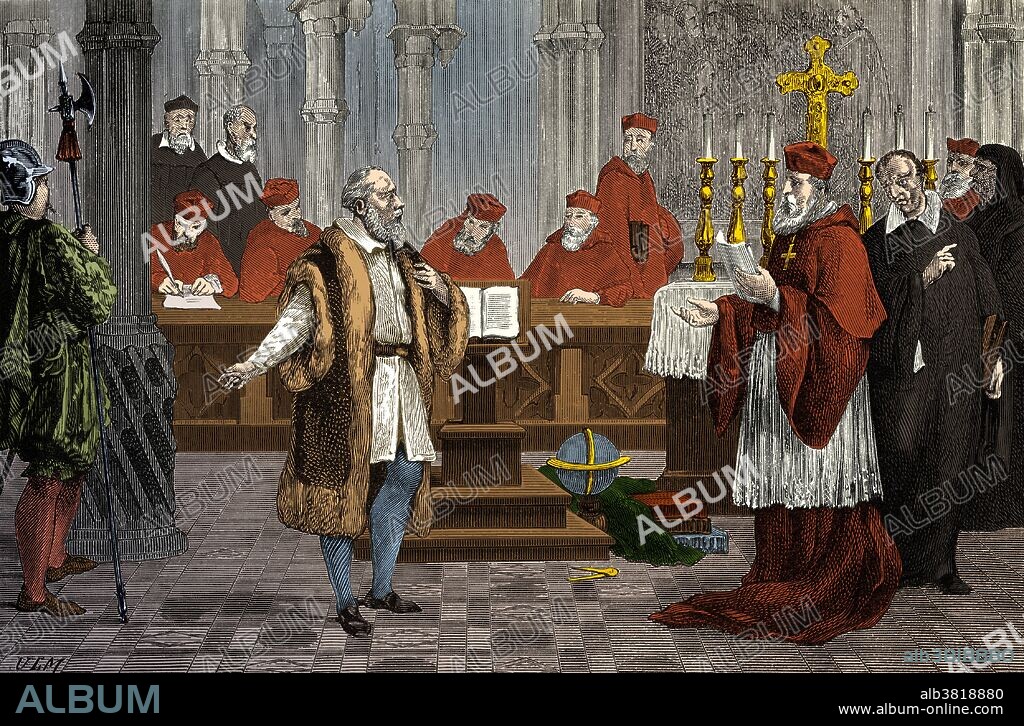alb3818880
Galileo Galilei on Trial, 1633

|
Zu einem anderen Lightbox hinzufügen |
|
Zu einem anderen Lightbox hinzufügen |



Haben Sie bereits ein Konto? Anmelden
Sie haben kein Konto? Registrieren
Dieses Bild kaufen.
Nutzung auswählen:

Titel:
Galileo Galilei on Trial, 1633
Untertitel:
Siehe automatische Übersetzung
Galilei's trial for heresy by the Roman Catholic Church. Galileo Galilei (February 15, 1564 - January 8, 1642) was an Italian physicist, mathematician, astronomer, and philosopher who played a major role in the Scientific Revolution. His achievements include improvements to the telescope, important astronomical observations and support for Copernicanism. Galileo has been called the "father of modern observational astronomy", the "father of modern physics", the "father of science", and "the Father of Modern Science". In 1610 he became the first person to use a telescope to make astronomical observations. He discovered the mountains on the Moon, the four largest moons of Jupiter and numerous dim stars. He studied the motion of a pendulum and found that the swings have a constant time period. He studied gravity, showing that heavy and light objects fall at the same rate. He supported the Copernican theory that the Sun was at the center of the solar system rather than the Earth. This belief was judged heretical by the Inquisition in 1633 and he was sentenced to house arrest for the rest of his life. Suffering fever and heart palpitations, he died in 1642, at the age of 77. This image has been color enhanced.
Bildnachweis:
Album / Science Source
Freigaben (Releases):
Bildgröße:
4500 x 2956 px | 38.1 MB
Druckgröße:
38.1 x 25.0 cm | 15.0 x 9.9 in (300 dpi)
Schlüsselwörter:
 Pinterest
Pinterest Twitter
Twitter Facebook
Facebook Link kopieren
Link kopieren Email
Email
